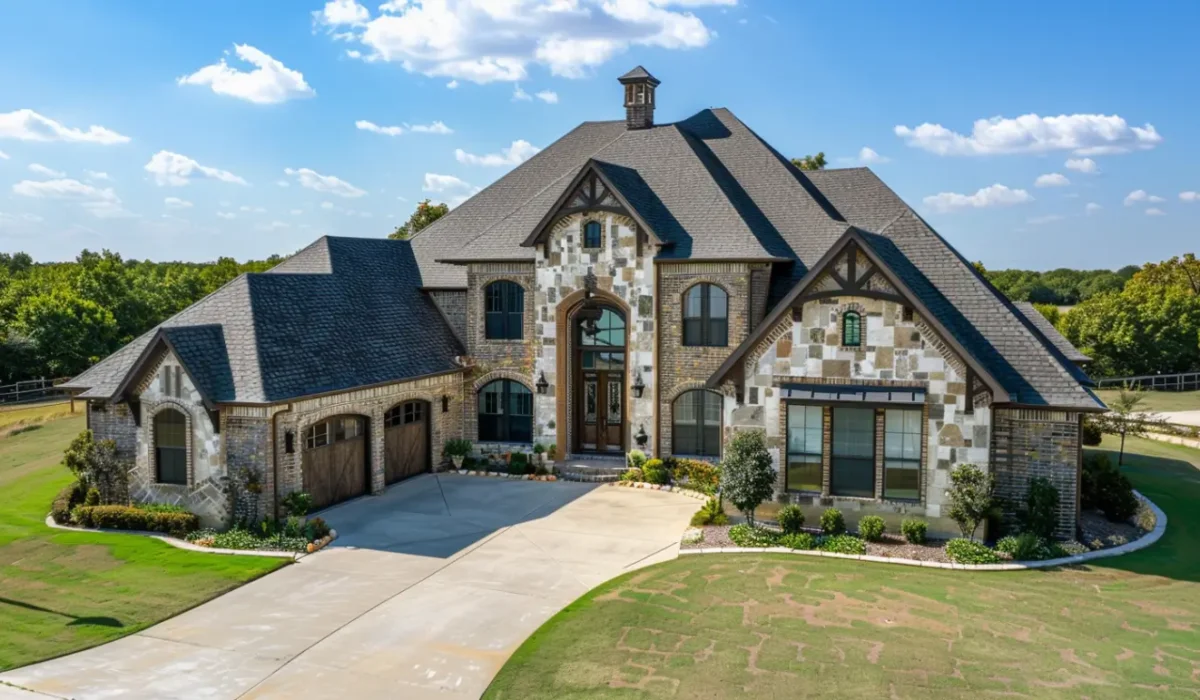Navigating a roofing project can be overwhelming—especially if you’re unfamiliar with the language contractors use. Whether you’re planning a roof replacement, handling storm repairs, or simply getting a routine inspection, understanding common roofing terms can empower you to make informed decisions. For homeowners in Coppell, TX, this glossary breaks down essential roofing vocabulary so you can confidently manage your next project.
Why Roofing Terms Matter
Clear communication with your contractor helps avoid misunderstandings and ensures that you receive the service and materials you expect. From understanding what “underlayment” means to knowing the difference between a “ridge vent” and a “soffit,” this glossary will keep you informed throughout every phase of the roofing process.
Roofing Terms You Should Know
1. Shingles
The outermost layer of your roof, shingles are the primary barrier against weather. Asphalt shingles are the most common due to their affordability and durability.
2. Underlayment
This water-resistant or waterproof barrier is installed under the shingles to provide an extra layer of protection against moisture intrusion.
3. Flashing
Metal (usually aluminum or galvanized steel) pieces used to direct water away from critical areas such as chimneys, skylights, and vent pipes.
4. Fascia
The horizontal board that runs along the edge of the roof. It supports the lower edge of the roof and gutters, and also helps keep water and pests out of the attic.
5. Soffit
Located under the overhanging section of the roof eaves, soffits provide attic ventilation and help prevent moisture buildup.
6. Ridge
The highest point on your roof, where two sloped roof areas meet. This is often covered with a ridge cap or ridge vent to allow for proper attic ventilation.
7. Ridge Vent
A type of vent installed along the roof ridge to allow warm, humid air to escape from the attic. It’s essential for maintaining attic temperature and preventing moisture damage.
8. Decking (or Sheathing)
The wooden base layer—typically plywood or OSB—that provides structural support for all roofing materials. It’s attached directly to the roof trusses.
9. Drip Edge
A metal flashing installed along the roof edges to help guide water into the gutters, preventing it from seeping under the shingles.
10. Gutter System
Channels water off the roof and away from the foundation. Gutters, downspouts, and gutter guards all work together to manage rainwater efficiently.
11. Eaves
The lower edge of the roof that overhangs the walls of your home. Eaves help direct water away from the siding and foundation.
12. Valley
The V-shaped channel formed where two roof slopes meet. This area is particularly prone to leaks and usually reinforced with additional flashing.
13. Hip
The external angle formed where two roof slopes meet. Hips are common in more complex roof structures and typically covered with hip shingles.
14. Ice and Water Shield
A self-adhesive membrane applied in vulnerable areas like valleys and eaves to prevent water intrusion due to ice dams or wind-driven rain.
15. Vent Pipe Boot
A protective covering that seals around plumbing vent pipes protruding through the roof. It prevents water from leaking into the home.
16. Granules
The mineral coating on asphalt shingles that provides UV protection and adds color and texture. Loss of granules is a sign of aging or damage.
17. Blistering
Bubbles that form on the surface of asphalt shingles due to poor ventilation or manufacturing defects. These can shorten the life of your roof.
18. Delamination
Occurs when the layers of shingles begin to separate, typically due to water intrusion or poor installation. It compromises shingle strength and performance.
19. Roof Pitch
The steepness or slope of a roof, expressed as a ratio (e.g., 4:12). Higher pitches shed water more efficiently but may require specialized installation.
20. Tear-Off
The process of removing the old roofing materials before installing a new system. Tear-offs are preferred over overlays for long-term durability.
Local Insights: Roofing in Coppell, TX
The hot summers, heavy rains, and sudden storms in Coppell make roofing durability a priority. Understanding these terms will help you communicate more effectively with your contractor, ensuring that you choose the right materials and techniques for your home’s needs.
Partnering with a trusted local expert like KangaRoof ensures that your roofing system is not only built to code, but optimized for Coppell’s unique climate conditions.
Why Choose Certified Contractors
Choosing a certified contractor like KangaRoof, an OC Preferred and Emerald Premium provider, guarantees expert service, top-grade materials, and warranty-backed workmanship. Their team is trained in the latest industry standards and equipped to answer any questions you may have about your roof.
Final Thoughts
Roofing doesn’t have to be confusing. With a solid grasp of the key terms used in the industry, you’ll be better prepared to understand your roof’s condition, communicate with professionals, and make smart decisions for your home.
If you’re in Coppell, TX and planning a roof replacement, inspection, or repair, contact the knowledgeable team at KangaRoof for trusted service and expert guidance. Your roof protects your greatest investment—understanding it is the first step toward keeping it in top shape.Read also our blog: What White Ceiling Stains Reveal About Roof Leaks
